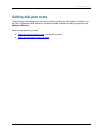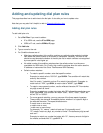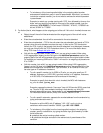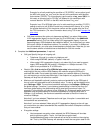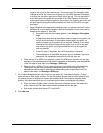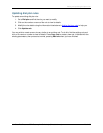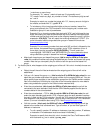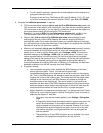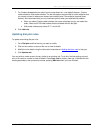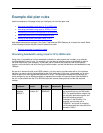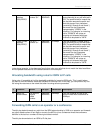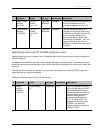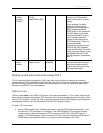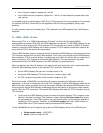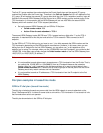
Adding and updating dial plan rules in leased line mode
Cisco TelePresence ISDN Gateway 2.1 Online help (Printable format) 32 of 135
To call a specific extension, separate the number/address from the extension by
typing an exclamation mark (!).
Example: to call the Cisco TelePresence MCU with IP address "10.2.1.33", and
try to join a conference with numeric identifier "00000", type 10.2.1.33 ! 00000
6. Complete the Additional parameters, if required:
o TCS-4 extension digits (optional):(this is only for IP to ISDN dial plan rules) specify the
TCS-4 extension to be used for calls matching this rule. Note that you can either type the
TCS-4 extension to be used, or you can specify a substitution group such that digits from
the original called number will be used as the TCS-4 extension.
Example: if you specify 99(D+) for the Called number matches field, and $1 for the
TCS-4 extension, then a call to 991234 will use "1234" as the TCS-4 extension.
o Restrict (56k):(this is only for IP to ISDN dial plan rules) when selected, for calls
matching this dial plan rule the ISDN Gateway will make the outgoing ISDN call in
restricted 56k mode. Do not select this option unless your network requires it. Note that
for a call matching a rule that uses 56k mode, if the endpoint only supports 64k, the ISDN
Gateway will drop the call rather than use 64k.
o Maximum call bandwidth:(this is only for ISDN to IP dial plan rules) optionally, select a
maximum bandwidth for the ISDN part of the call, which will otherwise be set to the
default value. To view or edit the default value, go to Settings > ISDN. The maximum
bandwidth settings on the Settings > ISDN page are global settings. Therefore, if you
choose a greater setting in the dial plan than you have as a global setting, the global
setting will be used as the maximum value. For example, if in the dial plan you choose to
set 320kbps (5 x B channels) as the maximum bandwidth and the global setting for
maximum bandwidth for outgoing ISDN calls is 256kbps (4 x B channels), the maximum
bandwidth available to the call will never be more than 256kbps.
o Encryption settings:
Use transparent encryption: when selected, the ISDN Gateway will simulate
point-to-point encryption. That is, it will set the encryption state
(enabled/disabled) used on the received call as that to be used on the outgoing
call. That is, the ISDN Gateway will attempt to match the encryption state for the
outgoing call to that of the incoming call. This means that if the encryption state
changes on the incoming call, the ISDN Gateway will attempt to change the
encryption state on the outgoing call. This can be helpful if a call starts as an
encrypted call both sides of the ISDN Gateway and then the incoming call stops
being encrypted for some reason; the outgoing part of the call will also drop the
encryption and both callers will know that the call is no longer encrypted.
Select Required in the appropriate checkbox(es) if you always want the IP and/or
ISDN part of a call to be encrypted or Optional if encryption is only to be used to
endpoints that support it. Note that:
Encryption must also be enabled globally in the Settings > Encryption
page.
If Required is selected and the endpoint does not support encryption, the
call will be disconnected. If the endpoint does support encryption, no
media is passed until encryption can be ensured. However if you select
Optional and the endpoint supports encryption, then a call to may start
even before encryption can be guaranteed but will use encryption as
soon as possible
These settings for IP and ISDN encryption are not available if you have
selected to use transparent encryption for this dial plan rule



